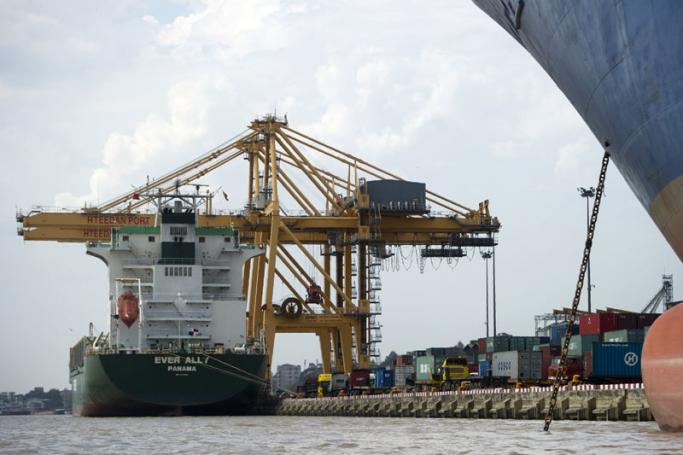A positive forecast and outlook in terms of recovery of Myanmar’s economy is presented by a Singapore based macro economic surveillance agency, ASEAN+3 Macroeconomic Research Office (AMRO) for the coming two years. After experiencing a dip in the last year (2016-17), the growth of the Myanmar’s economy has picked up in in 2017-18 and it is expected to cross 7 percent in the coming half-year of this fiscal and reach 7.4% the next year (FY2018/19).
Expanded government spending and export performance appears to be the main engines contributing to the growth momentum. A pick-up in agriculture and manufacturing activities has also contributed to the growth. Inflation is also expected to ease in the rest of this fiscal and next year.
Presenting the Annual Consultation Report on Myanmar at a press conference in Yangon, Chief Economist of AMRO Dr Khor Hoe Ee, expressed optimism that Government of Myanmar would continue to address some of the structural and institutional reforms that it has taken up during the past few years.
Export performance in garment sector and in minerals show strong growth that contributed to the overall growth of the economy. While credit off-take has been low and the quality of assets of domestic banking sector is a worrying factor, which the central bank of Myanmar is seized with. A turn around in the banking sector is an urgent requirement for Myanmar to show financial sector stability.
Slow growth of tax revenue and low tax-GDP ratio is a cause of concern in terms of augmenting investments and budgets for public services in Myanmar. Reduced contribution of SEE and health of SEEs is an issue that the government has to grapple with. Reforming SEEs has to be high on the agenda of the government, as they are increasingly becoming a drain on the exchequer.
Identifying the need for fiscal consolidation in terms of enhancing tax revenue and containing current expenditure, Chief Economist of AMRO urged the Government to adhere to medium-term fiscal discipline, which would be seen as a confidence building measure. The need for strengthening further the public debt management framework is also identified. While acknowledging that new banking regulations put in place by Central Bank may create a short-term pressure on banks and corporate sector, it would enable enhancing quality, soundness and resilience of the financial sector in the long run.
Flexible management of the exchange rate and further building up of reserves to face any potential adverse shocks is advocated by AMRO in its policy outlook.
On the downside risks, the Rakhine crisis is identified as one that could affect growth. In the eventuality of any dip in exports on account of this crisis, Myanmar can explore options of other markets and would be able to offset such an eventuality. The US-China trade wars is another aspect noted which may in fact affect the region as a whole to the extent of 0.2 to 0.5 of regional GDP. However, impact on Myanmar may not be significant. Depreciation of Kyat is a factor to be watched, as it would exert pressure on inflation.
The medium term structural and institutional reforms are immediate tasks at hand from the point of Government’s intervention. A coherent policy framework and reform push is required for developing market-based economy with inclusive growth. Measures are needed in domestic revenue mobilization in terms of tax reforms and SEE restructuring.
Upgrading infrastructure, investing in education and skill development of youth, measures for improving investor confidence and a coordinated way of working between Union government and state/region governments in promoting FDI and domestic investment are some of the policy recommendations proposed by AMRO in its report on Myanmar.












